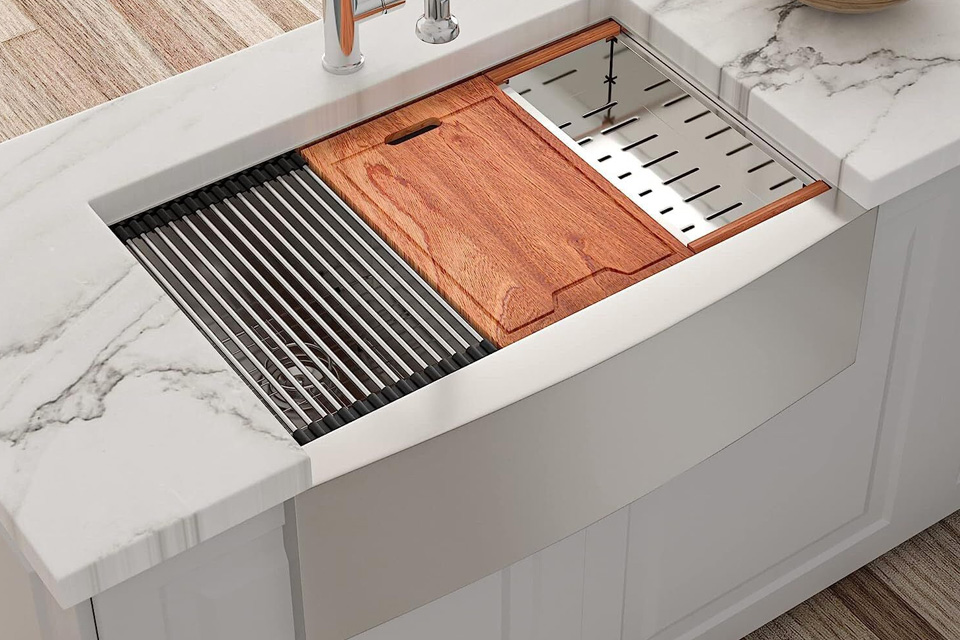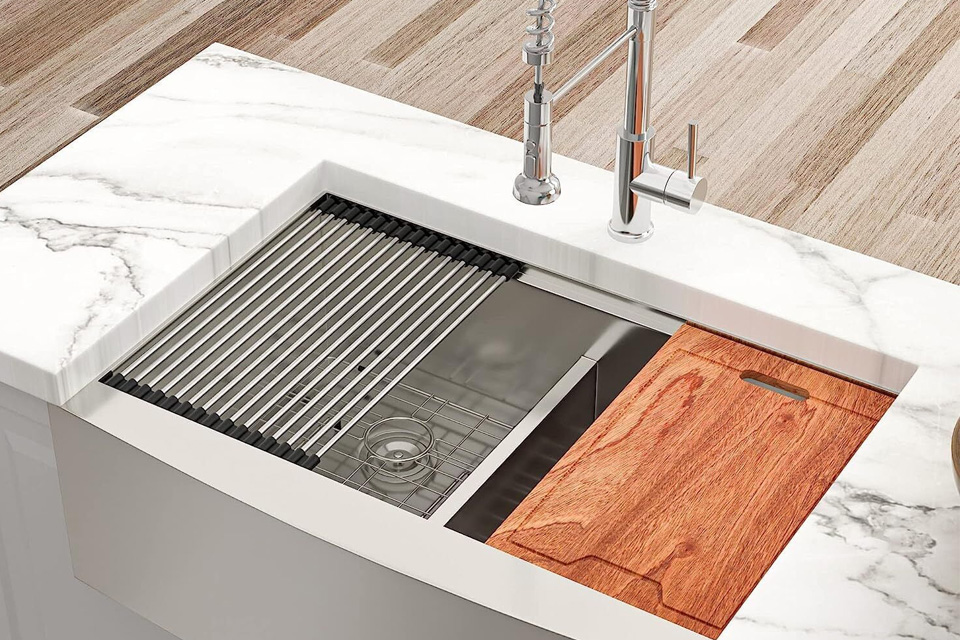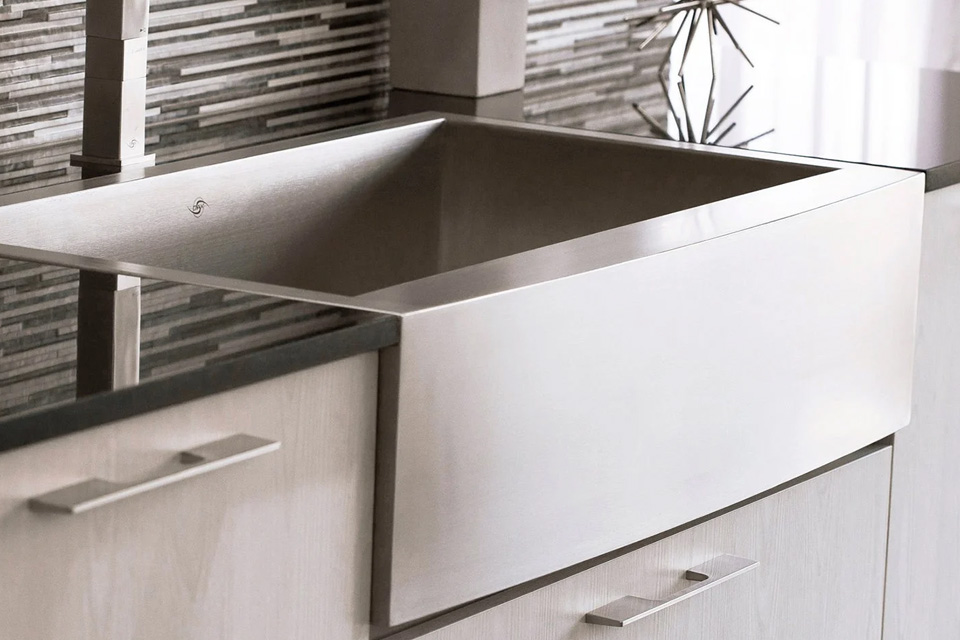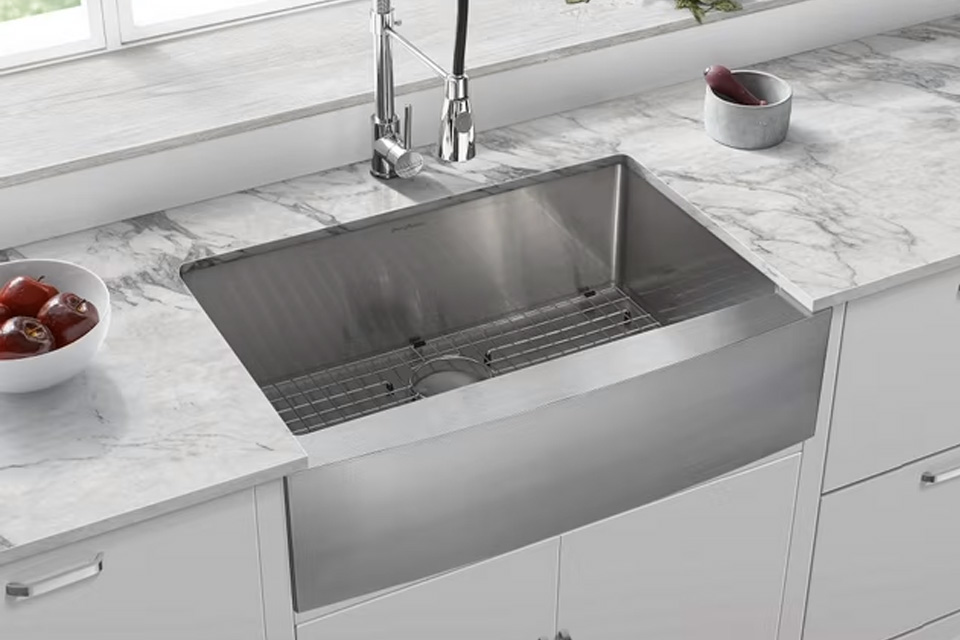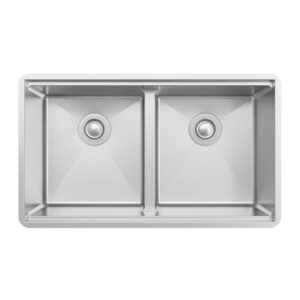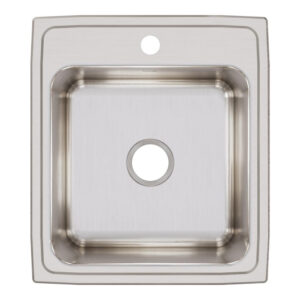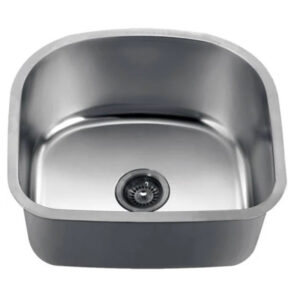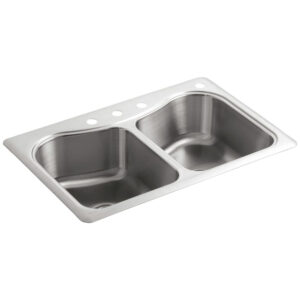
A Complete Guide: How to Install a Farmhouse Sink
Table of Contents
Introduction
Whether you’re renovating your kitchen or simply updating your sink, this guide will take you through the entire process of installing a farmhouse sink. It’s worth reading because, by the end, you’ll know exactly how to do it yourself, saving you time and money while enhancing your kitchen’s aesthetic appeal.
What is a Farmhouse Sink and Why Choose One?
A farmhouse sink, often referred to as an apron-front sink, is known for its large, deep basin and a front panel that extends slightly beyond the edge of the countertop. This design is not only aesthetically pleasing but also highly functional, providing ample space for washing large pots and pans. The farmhouse sink installation process is typically more involved than standard sinks, but the result is well worth the effort.
Why choose a farmhouse sink? These sinks offer a blend of modern and traditional appeal, making them a versatile choice for various kitchen styles. They also stand out for their durability and ability to handle heavy kitchen use, whether you’re cooking for a large family or just enjoy spending time in the kitchen.
Tools and Materials Needed for Farmhouse Sink Installation
Before you begin the farmhouse sink installation, it’s essential to gather all necessary tools and materials. This preparation will save you time and reduce the chance of encountering unexpected challenges.
Here’s what you’ll need:
- Tape measure
- Jigsaw (for cutting the countertop)
- Caulking gun
- Silicone sealant
- Pipe wrench
- Plumber’s putty
- Level
- Mounting brackets (if required)
- Sink clips
- Drain kit and basket strainer
Having these tools at hand ensures a smoother installation process. It’s also helpful to have a helper, especially when lifting the heavy kitchen sink into place.
How to Prepare Your Countertop for a Farmhouse Sink
The first step in installing a farmhouse sink is preparing the countertop. Proper preparation is crucial for a secure fit and a professional-looking finish.
Measure the sink and countertop: Use your tape measure to determine the dimensions of your farmhouse sink. Mark these dimensions on your countertop. Remember that the sink should fit snugly, with the front apron extending slightly beyond the edge of the countertop.
Cut the countertop: Using a jigsaw, carefully cut along the marked lines. It’s important to be precise during this step, as an incorrect cut can lead to alignment issues.
Check the fit: Once the countertop is cut, place the sink into the opening to ensure it fits properly. If necessary, make small adjustments until the sink fits perfectly.
This step requires attention to detail and patience, but getting it right will make the rest of the installation much easier.
Top Mount vs. Undermount Farmhouse Sinks: Which is Right for You?
When it comes to farmhouse sink installation, one of the key decisions is choosing between top mount and undermount sinks. Both have their advantages, but the right choice depends on your kitchen’s design and your personal preference.
Top Mount Farmhouse Sinks: Also known as drop-in sinks, these are installed by placing the sink on top of the countertop. They are easier to install and are a good choice if you want a traditional look with visible edges.
Undermount Farmhouse Sinks: These sinks are installed beneath the countertop, providing a seamless appearance. They require more precision during installation but offer a modern and clean look, with no visible edges around the sink.
Consider the style of your kitchen and your experience level when deciding between these two options. Top mount sinks are generally more DIY-friendly, while undermount sinks provide a sleek, high-end finish.
Step-by-Step Guide to Installing a Farmhouse Sink
Now that your countertop is prepared, it’s time to begin the actual installation of your farmhouse sink.
Place the sink: Carefully lower the sink into the cutout. Ensure that the apron front is aligned with the front edge of the countertop.
Secure the sink: Depending on the type of sink, you may need to use mounting brackets or sink clips to hold it securely in place. Use a level to make sure the sink is properly aligned.
Seal the edges: Apply silicone sealant around the edges of the sink where it meets the countertop. This creates a watertight seal and prevents water from seeping underneath the sink.
This process requires precision, but with careful attention to detail, you can achieve a professional-looking result. If needed, refer to the manufacturer’s instructions for specific details related to your sink model.
How to Plumb a Farmhouse Sink: Connecting the Drain and Faucet
After installing the sink, the next step is to connect the plumbing. This includes installing the drain and attaching the faucet.
Install the drain: Apply plumber’s putty around the edge of the drain hole, then insert the drain kit. Tighten it using a pipe wrench to ensure a secure fit. Make sure the drain is properly aligned with the center drain location of your sink.
Connect the plumbing: Attach the drain pipes to the sink, ensuring they are securely connected to the existing plumbing system. Double-check all connections to prevent leaks.
Install the faucet: Once the drain is in place, install your faucet according to the manufacturer’s instructions. Ensure that all connections are tight and that the faucet is functioning correctly.
Proper plumbing is essential for the long-term performance of your kitchen sink. Take your time to make sure everything is connected correctly to avoid issues down the line.
Installing a Farmhouse Apron Sink with Existing Cabinets
If you’re retrofitting a farmhouse apron sink into existing cabinetry, there are a few additional steps to consider.
Modify the cabinets: Depending on the size of your sink, you may need to modify your cabinets to accommodate the apron front. This could involve cutting away a portion of the cabinet face to allow the sink to fit properly.
Reinforce support: Farmhouse sinks are heavy, especially when filled with water. Reinforce the cabinet structure to ensure it can support the weight of the sink. Installing additional bracing or supports may be necessary.
Fit and secure: Once the cabinet modifications are complete, follow the same steps for placing and securing the sink as mentioned earlier.
Retrofitting a farmhouse sink can be more challenging, but with careful planning and execution, it can be done successfully.
Common Challenges in Farmhouse Sink Installation and How to Overcome Them
Installing a farmhouse kitchen sink can come with its share of challenges, but being aware of potential issues ahead of time can help you avoid them.
Countertop misalignment: If your countertop cutout is slightly off, you may encounter alignment issues. Measure carefully before cutting and make small adjustments as needed.
Weight and support: Due to the heavy weight of farmhouse sinks, improper support can lead to sagging over time. Always reinforce your cabinets and ensure the sink is securely mounted.
Plumbing adjustments: You may need to adjust your existing plumbing to fit the new sink. This could involve rerouting pipes or extending connections. Consider consulting a plumber if you’re unsure about making
these adjustments yourself.
By anticipating these challenges and preparing accordingly, you can ensure a smoother installation process. If you encounter any major issues, don’t hesitate to seek professional assistance.
How to Care for and Maintain Your Farmhouse Sink
Once your farmhouse sink is installed, maintaining its beauty and functionality is crucial. Regular cleaning and maintenance will help your sink last longer and look better.
Daily Cleaning: Wipe down the sink after each use to prevent water spots and mineral buildup. Use a mild detergent and a soft cloth or sponge to clean the surface.
Prevent Scratches: Avoid using abrasive cleaners or scouring pads, as they can scratch the stainless steel or other materials. Use a sink grid or mat to protect the sink bottom from scratches caused by heavy pots and pans.
Prevent Stains: Be mindful of leaving acidic foods or liquids in the sink for extended periods, as they can cause discoloration. Rinse the sink thoroughly after exposure to such substances.
By following these simple care routines, your farmhouse kitchen sink will remain in top condition for years to come.
Cost and Time Considerations for Farmhouse Sink Installation
Installing a farmhouse sink can be a time-consuming project, especially if you’re doing it yourself. It’s essential to plan accordingly, considering both the time and cost involved.
Time: The entire process, from preparing the countertop to completing the plumbing, can take anywhere from several hours to a full weekend, depending on your skill level and whether you encounter any challenges.
Cost: In addition to the cost of the sink itself, consider the price of materials, tools, and any professional help you might need. If you’re hiring a contractor, labor costs will vary based on your location and the complexity of the installation.
Budgeting both your time and money will help ensure the project goes smoothly and is completed without unnecessary stress.
Comments
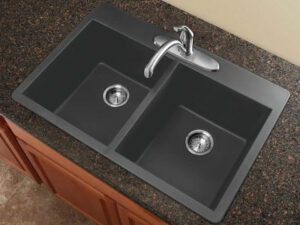
The Comparison Between Double Bowl Sink and Single Bowl Sink
When designing your kitchen, selecting the right sink is crucial for both functionality and aesthetics. Two popular options are double bowl and single bowl kitchen sinks.

Why Choose an Undermount Sink
Undermount sinks are a popular choice in modern kitchen and bathroom designs, known for their sleek, seamless integration with countertops.

What Are The Advantages of Stainless Steel Kitchen Sinks
Stainless steel sinks are a popular choice for kitchens, known for their durability, ease of maintenance, and sleek design.

Choosing the Right Sink for Your Bathroom Remodel: A Complete Guide
When planning a bathroom remodel, one of the most important decisions you’ll make is choosing the right sink.
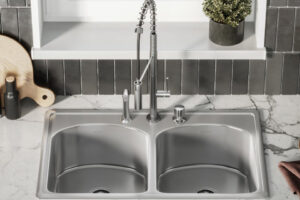
The Best Ways to How to Clean a Stainless Steel Sink
Keeping your stainless steel sink clean and shiny not only enhances the look of your kitchen but also prolongs the lifespan of your sink.
Tags
Related Blog
Learn the newest trends and common knowledge from our blog in stainless steel sinks business.
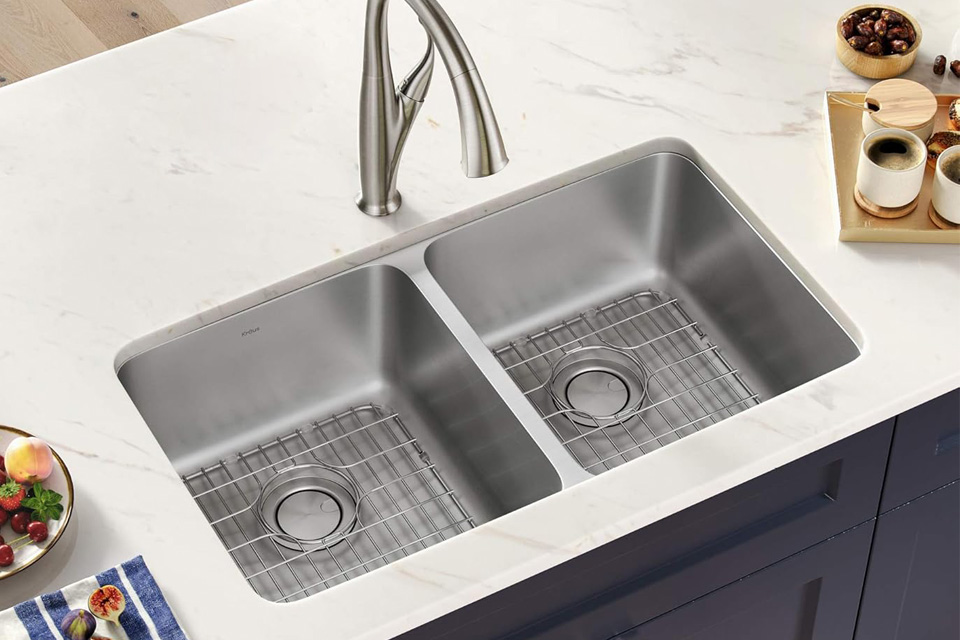
How to Install a Double Bowl Kitchen Sink: A Complete Guide
Installing a double bowl kitchen sink can be a game-changer for your kitchen’s functionality, providing separate spaces for washing and rinsing.
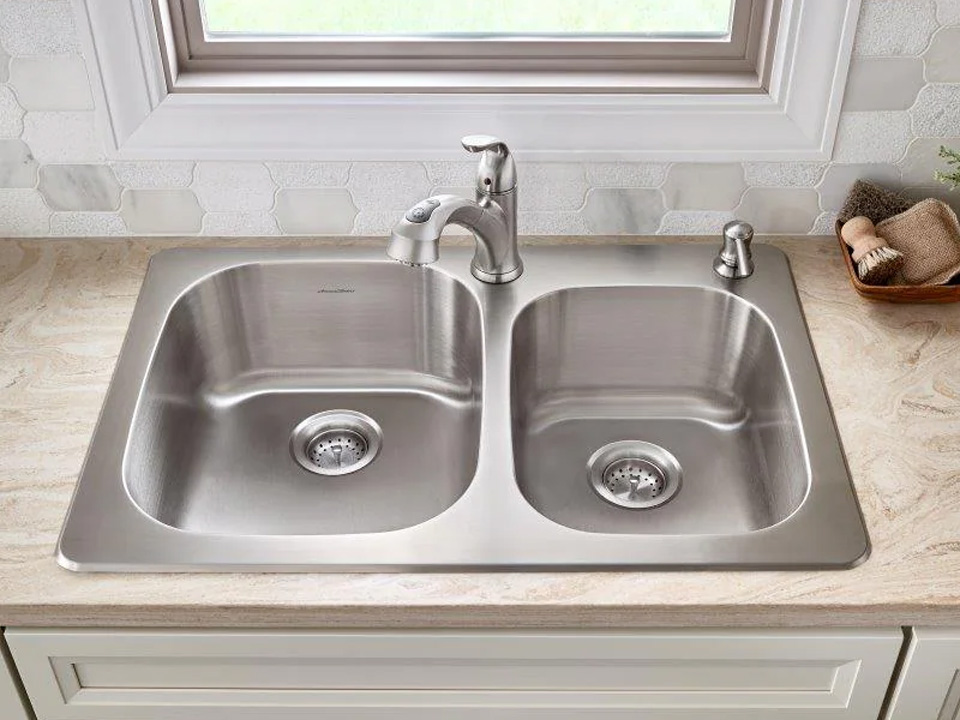
The Stainless Steel Kitchen Sink: A Modern Kitchen Essential
When planning a kitchen renovation or update, selecting the perfect sink is a crucial decision.
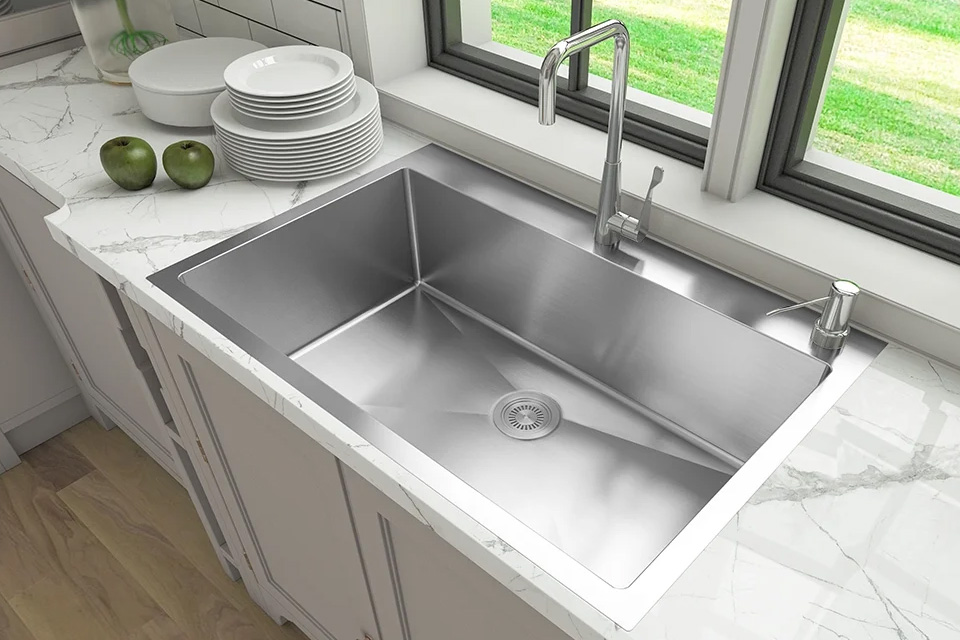
What Are The Advantages of Stainless Steel Kitchen Sinks
Stainless steel sinks are a popular choice for kitchens, known for their durability, ease of maintenance, and sleek design.

